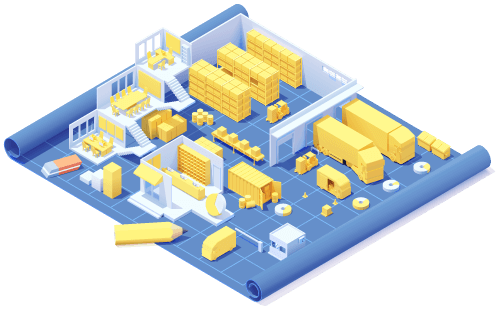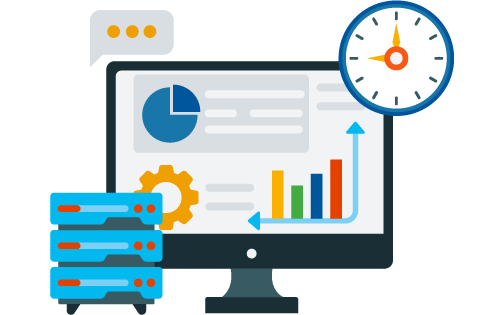Forecasting and Demand Planning Made Easy with Inventory Software
Built For


Forecasting and Demand Planning Made Easy with Inventory Software
If you’ve ever found yourself scrambling to meet customer demand or dealing with piles of unsold inventory, you know how crucial it is to get your forecasts right.
Fortunately, inventory and order management software can make this process much more manageable, helping you plan confidently and accurately. Effective forecasting and demand planning can be the difference between a well-oiled supply chain and one bogged down by stockouts, overstock, and inefficiencies.
Why Forecasting and Demand Planning Matter
Without solid forecasting, businesses risk:
- Stockouts, leading to lost sales and unhappy customers.
- Overstocking, tying up capital in inventory that may become obsolete.
- Inefficient resource allocation, making it harder to optimize operations.
- Poor supplier relationships due to inconsistent or last-minute ordering.
Accurate demand planning allows businesses to balance supply and demand, minimize waste, and ensure customers get what they need when they need it.
How Inventory Software Simplifies Forecasting and Demand Planning

Real-Time Data for Smarter Decisions
Imagine running a business where every inventory decision is based on outdated reports or gut feelings. That’s a risky way to operate, and it can lead to stock shortages or wasted capital on excess products.
With inventory software, businesses gain real-time access to their stock levels, sales trends, and order histories, enabling them to make informed decisions instantly. Instead of relying on manual tracking, they can see which products are moving quickly and which are stagnating, allowing for immediate adjustments to purchasing and stocking strategies.
Learning from Past Sales to Predict the Future
Think about how often customer preferences change throughout the year. Seasonal trends, product popularity shifts, and market dynamics all play a role in shaping demand.
Inventory software analyzes historical sales data to identify these patterns, giving businesses a clearer picture of what to expect. For example, if an online retailer notices a surge in certain items every holiday season, they can proactively stock up before the rush. Similarly, manufacturers can track which raw materials are used the most and ensure they have a steady supply to prevent production slowdowns.
Proactive Alerts Save Time and Reduce Errors
Nobody wants to be caught off guard by an out-of-stock product or excess inventory piling up in storage. Additionally, forecasting and demand planning shouldn’t involve hours of spreadsheet work and guesswork.
With demand forecasting tools, businesses can let the software do the heavy lifting, providing past trends, sales velocity, and supplier lead times. Instead of manually calculating when to reorder products, the software generates reorder alerts, ensuring businesses stay ahead of demand fluctuations without the risk of human error.
Real-time inventory reports and dashboards also keep managers aware of rising stock levels for slow-moving products, helping them avoid unnecessary storage costs. With these proactive measures in place, companies can fine-tune their inventory strategies and maintain a balanced stock level.
Strengthening Supplier Relationships Through Better Planning

Last-minute purchase orders and inconsistent demand forecasting can strain relationships with suppliers, leading to rushed shipments, higher costs, and unreliable deliveries.
With better demand forecasting tools, businesses can plan their orders well in advance, ensuring smoother transactions with suppliers. Predictable purchasing patterns improve supplier reliability and open the door for better pricing and volume discounts, creating a win-win situation for both parties.
Managing Demand Across Multiple Sales Channels
Businesses that sell through multiple channels—eCommerce stores, EDI, marketplaces, and via a direct sales team—need an accurate way to forecast demand across all platforms.
Inventory software consolidates inventory and sales data from all sources into a single dashboard, helping businesses see the big picture. Companies can adjust their stock levels accordingly to ensure every channel is properly stocked, whether a product is flying off the shelves in one sales channel but stagnating in another.
Best Practices for Using Inventory Software for Demand Planning
Even with the best software, businesses still need a solid strategy. Here are some best practices for getting the most out of forecasting tools:
- Regularly review your data: Don’t set and forget your forecasts. Check reports frequently to adjust for trends and changes.
- Segment your inventory: Different products have different demand patterns. Classify them into categories like fast-moving, seasonal, or slow-moving items.
- Account for external factors: Keep an eye on market conditions, economic shifts, and industry trends that might affect demand.
- Use reorder points and safety stock: Set minimum stock level thresholds to avoid running out of critical items.
- Leverage analytics dashboards: Many inventory platforms offer customizable dashboards that make it easy to visualize trends and make informed decisions.
Forecasting and demand planning don’t have to be complicated or stressful. With inventory and order management software, businesses gain the insights they need to maintain optimal stock levels, improve efficiency, and keep customers happy. Whether you’re an online retailer or a growing manufacturer, leveraging the right tools can take your inventory management to the next level, ensuring you’re always prepared for what’s next.
Call us at 817-870-1311





